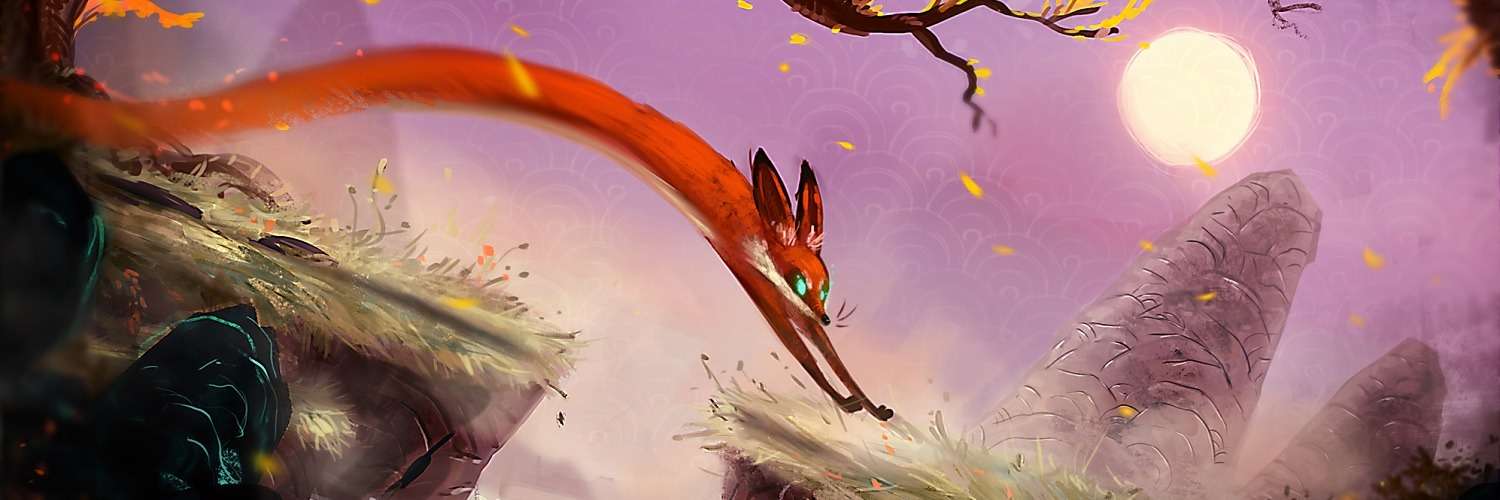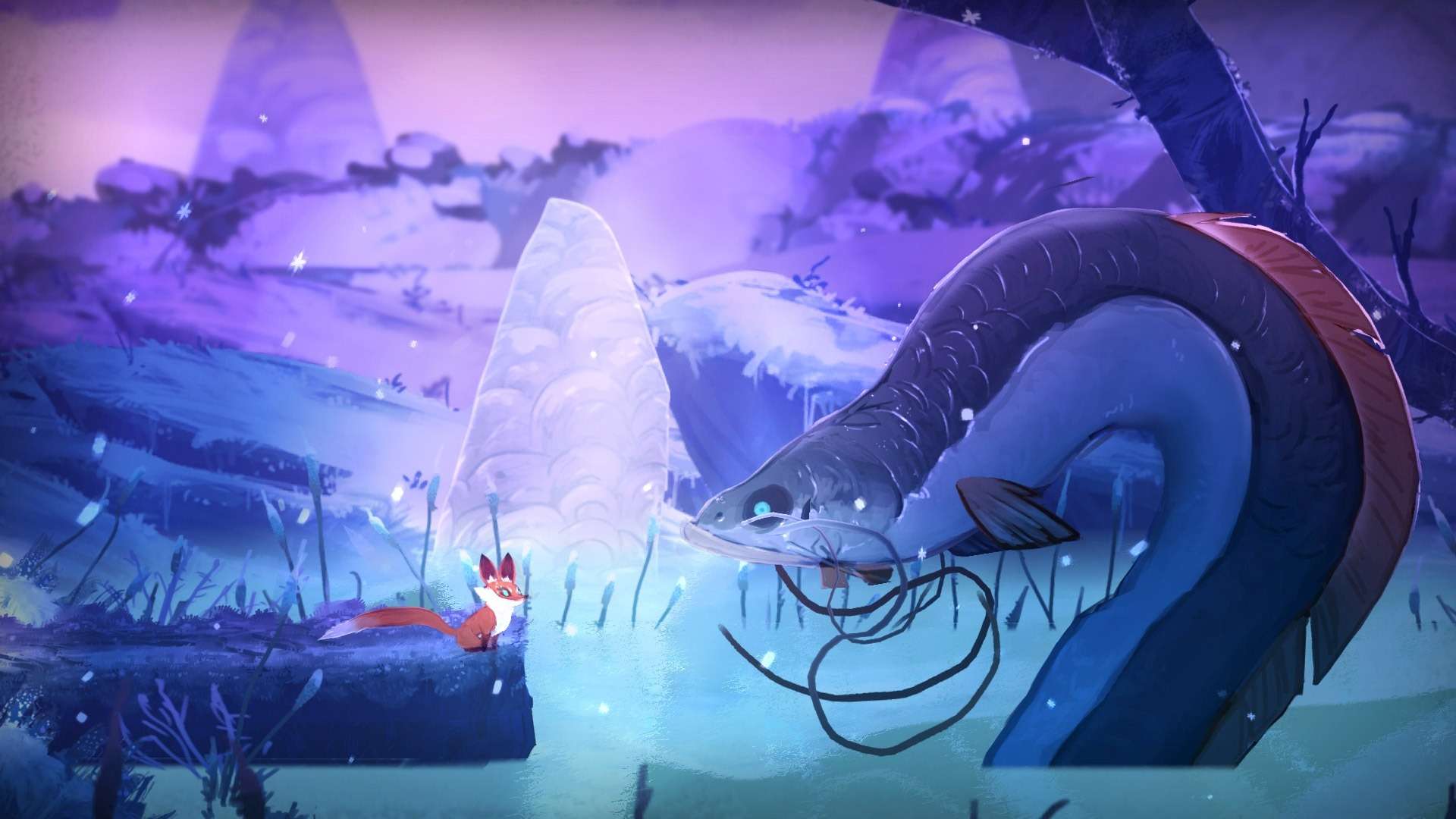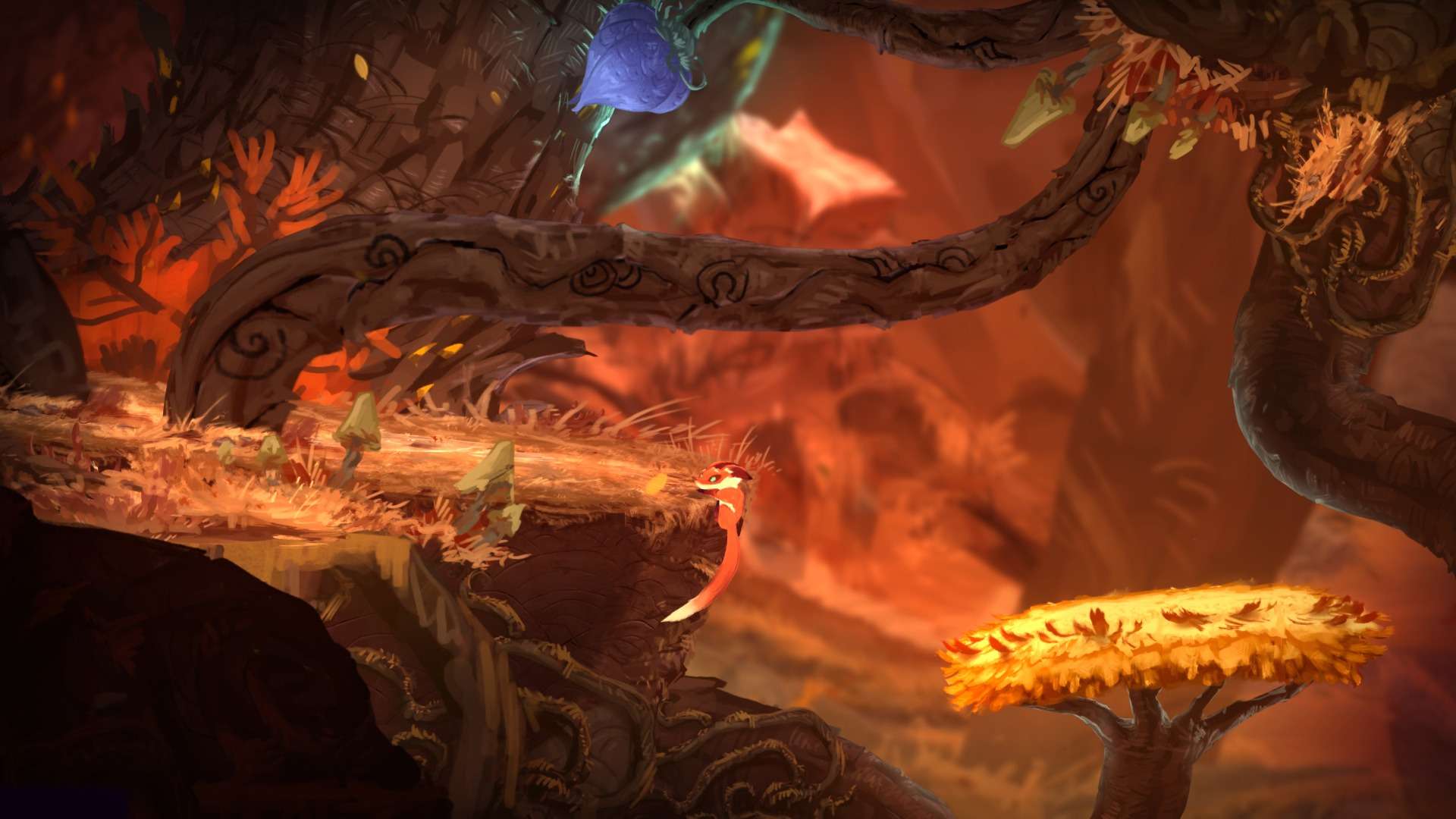
Seasons After Fall PC Review
While all the big players in the video game industry are pushing forward with new technologies, opening up boundaries to the world of 4K resolution and building new techniques for realistic and stunning visuals, it’s the independent game developers that quietly bring surprises with visually striking art styles that somehow find a way to make people view in awe. Seasons After Fall is one such game that makes a gorgeous first impression with its beautiful hand-drawn visuals and animation. The developer, Swing Swing Submarine, has managed to create an animated painting, a vibrant colour pallet with a ambient soothing soundtrack that feels perfect for a children’s animated short, but is there more to the game than its lovely presentation?
In fact, the story is one that also is suited for a children’s tale. It begins with the player taking control of a seedling far underground, who is told by a voice to make their way up into the forest from below. Once above ground, a snoopy fox arrives to see what the disruption is in the forest. This is where the voice tells you to become a practician in possession and jump into the fox to use its physical body to accomplish the task set by the voice – gather all the fragments of the seasons from each of the guardians and return them to the sanctuary to perform the Ritual of Seasons, but the player is never told exactly why this needs performing. The story is good at manipulating the player into thinking it is about the end before it throws a twist to extend the length of the game a couple of times. It’s not a narrative that is particularly refreshing, but it does enough to keep the player pushing forward to see what this voice’s grand scheme is over the course of four to five hours, depending if you want to hunt down the resting spots for more story.
Seasons After fall is a blend of side-scrolling puzzle platformer with elements taken from games that fall into the Metroidvania category. The game introduces the world by getting the player to go and find each of the four seasonal fragments that sit at each corner of the environment. The story forces the unlock of the fragments in a particular order – Winter, Autumn, Spring and then finally Summer. These fragments are the game’s key mechanic, as it gives powers to allow the player to control the seasons, manipulating them to change how the environment is depicted. Seasons After Fall is a calming experience, as the focus is on puzzles and platforming, voiding the game of any death scenarios or enemies.
The build up with Seasons After Fall’s beginning feels like a linear tutorial that overextends its welcome and doesn’t truly showcase the game from being another pretty indie platformer until all the fragments are collected. The fact that it shows off all four locations, albeit not in their full glory, before the game opens up makes it suffer from unnecessary backtracking to revisit those areas, passing through the central point every time. There is no direct way to bypass into another area. There are ways to speed through a zone with the use of spirit lanes that rush the fox over a portion of the map, but it can only do so much against the massive amount of retreaded steps that occur that are an unneeded artificial extension to the game.
After the first twist, the game opens up to let the player choose which of the four areas that branch off the main sanctuary centre they would like to proceed with. This open progression is what links to the Metroidvania exploration design, giving the player the option to tackle the sections as they see fit. Ultimately, over the course of the game, each area will be visited multiple times, with each visit increasing the amount of exploration that can be done. It’s at the latter point of the game where I feel a map would have been a nice inclusion, as at times the design of the world can be confusing to pinpoint exactly what direction your target destination is. The world is open to backtracking, lots of backtracking, so a map would have helped so much in telling players exactly what areas are left to discover without getting mindlessly lost or deciphering where the game wanted you to go.
Puzzles are presented in an intriguing fashion, but never become truly difficult, as a solution is down to fundamentally having the right season activated and figuring out how to manipulating some of the movable variables to have them set in the right place to unlock a route to the next screen. For example, it could be currently Spring in the forest, with lakes requiring the fox to swim across them to reach the other side, but on arrival the edge is a little too high to jump to, and so switching to Winter, which casts the environment in a coating of glistering beauteous white, will freeze all water substance, giving a solid surface for the orange creature to jump off for extra height. Spring is often used to bring the rain that gives opportunity to use specific plants that capture the rain to spring them loose and raise the water levels, Autumn is used to open up the plant platforms, while Summer can drain water with the same plants that raised it, or even grow fresh plant life for new platforms to reach new places. There is no shortage of mixing the seasons, such as the geysers that get bigger in Spring, but shorter in Fall, giving variable platform heights when freezing them in Winter. The shifting of seasons creates a dynamic world that is forever in motion under your will, and each seasonal transformation is a visual treat.
Seasons After Fall gets top marks for its pretty painted canvas visuals that are, sadly, the main attraction of the game. It’s a dazzling world that sparkles with beauty, but that isn’t enough to cover its bothersome issues. Seasons After Fall’s simplistic and easy-to-solve puzzle design mixed with the lack of impending doom offers an experience that is relaxing, an almost perfect fit with the visuals, but pacing issues, overuse of backtracking and obtuse directions turn a beautiful game a little sour, spoiling what could have been a brilliant experience from beginning to end.


